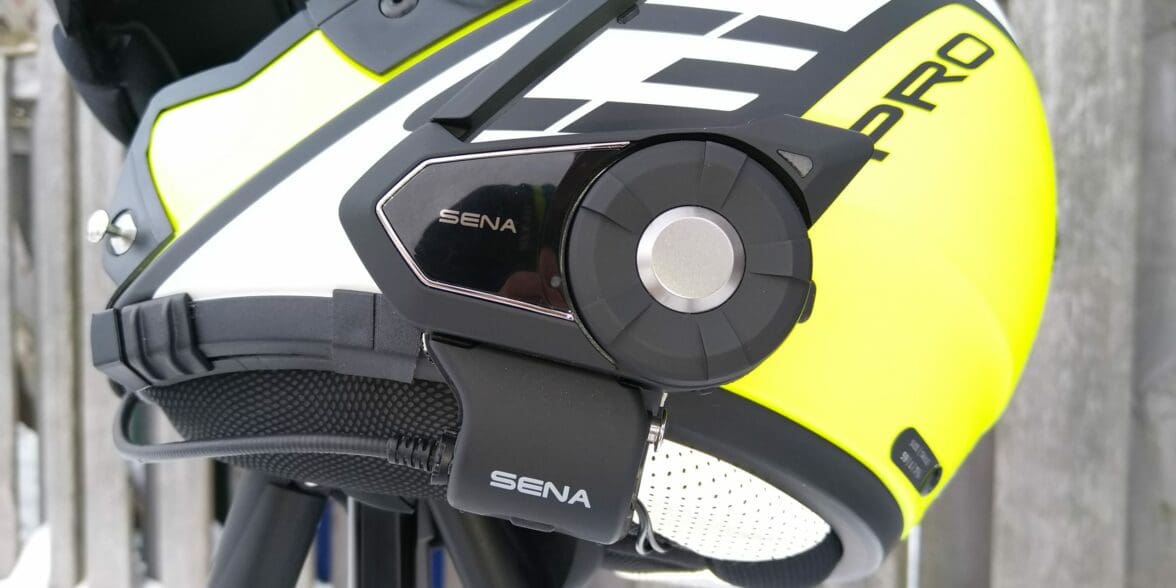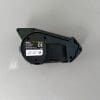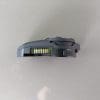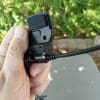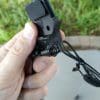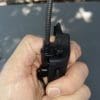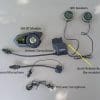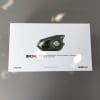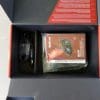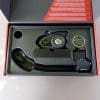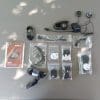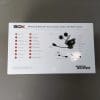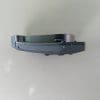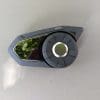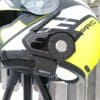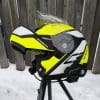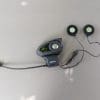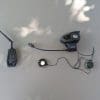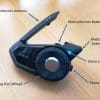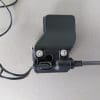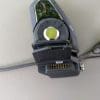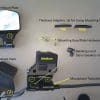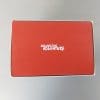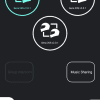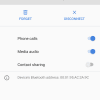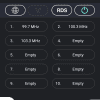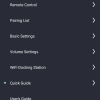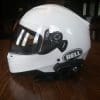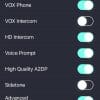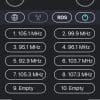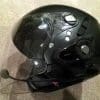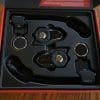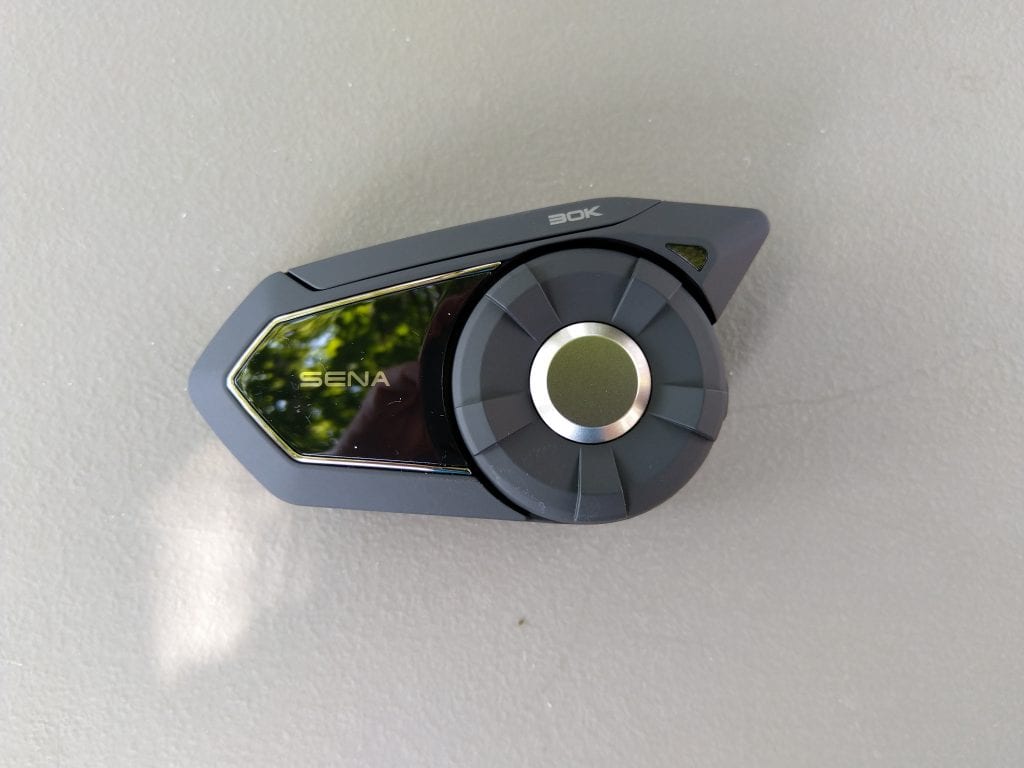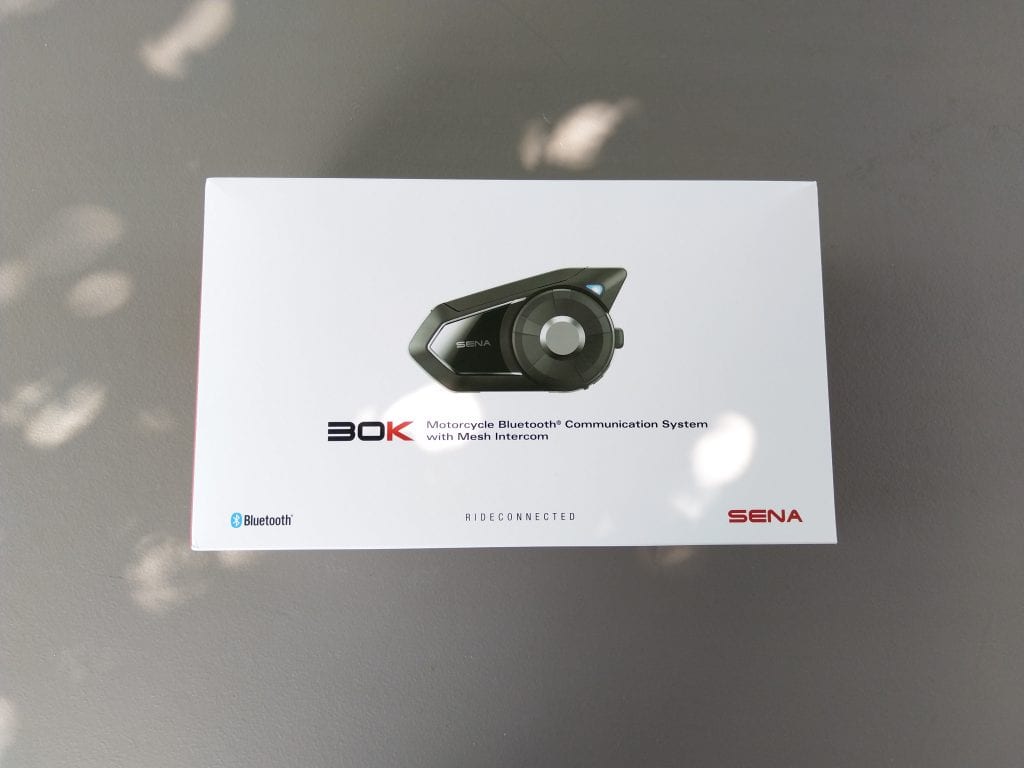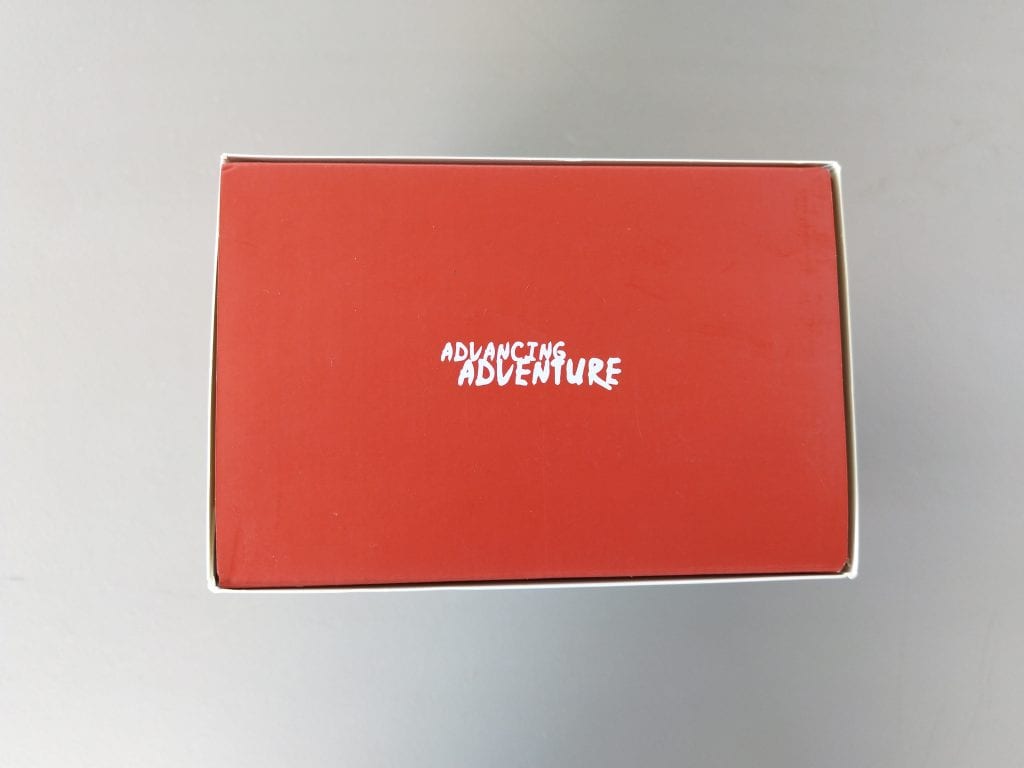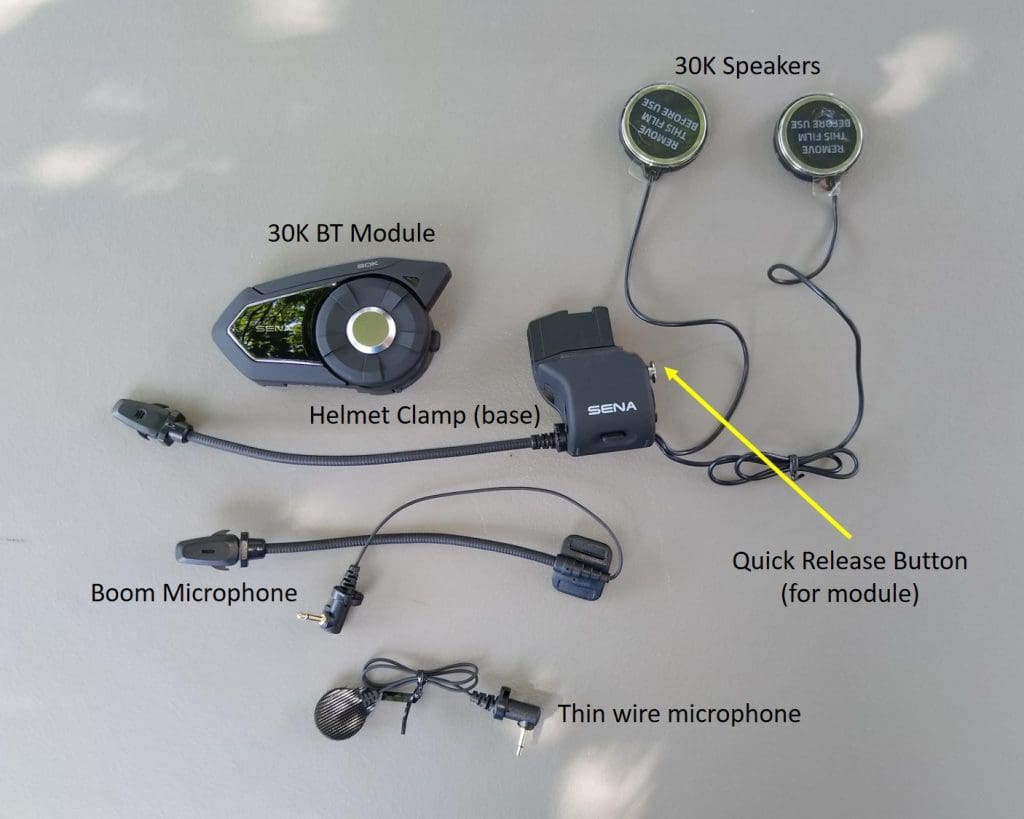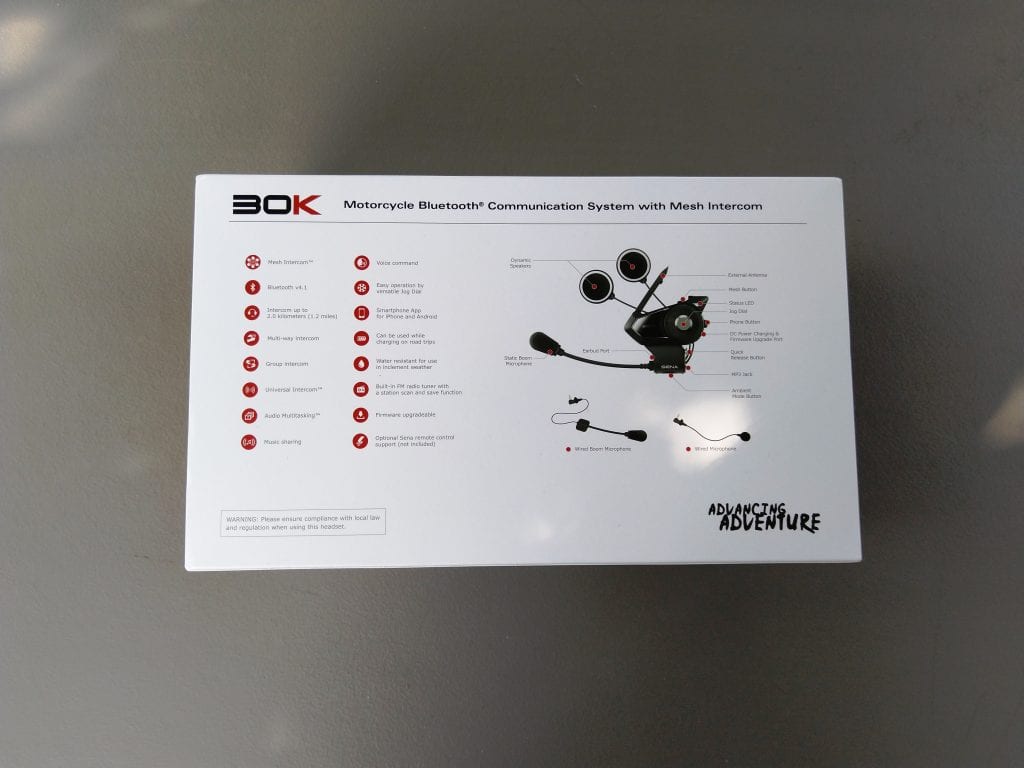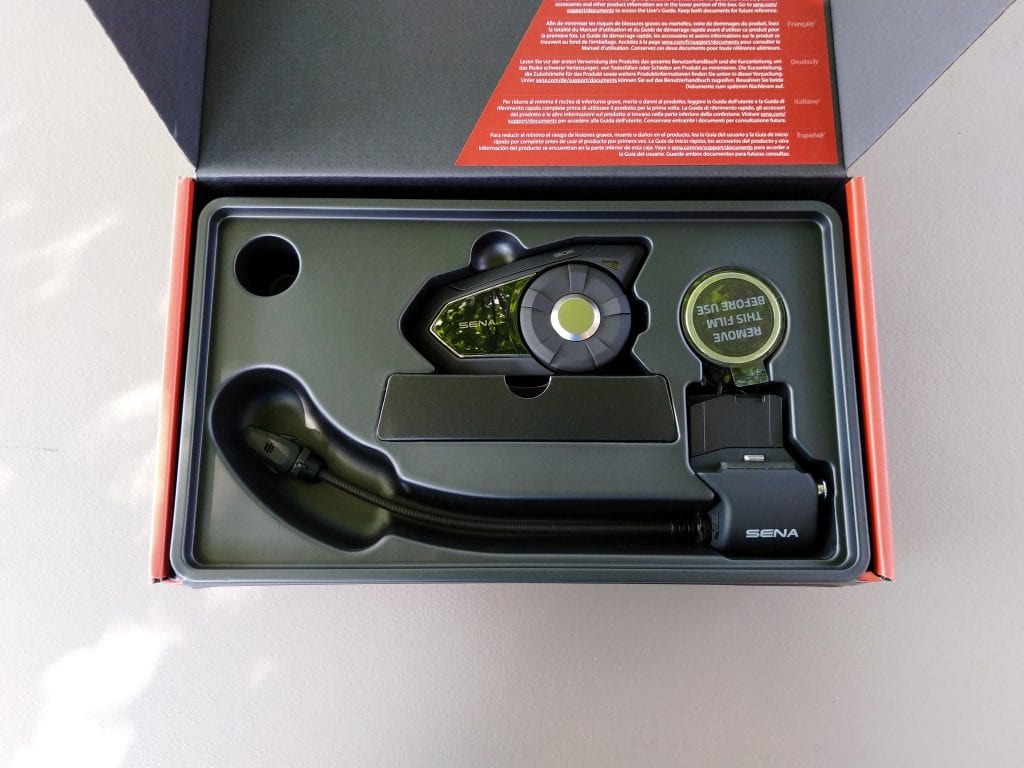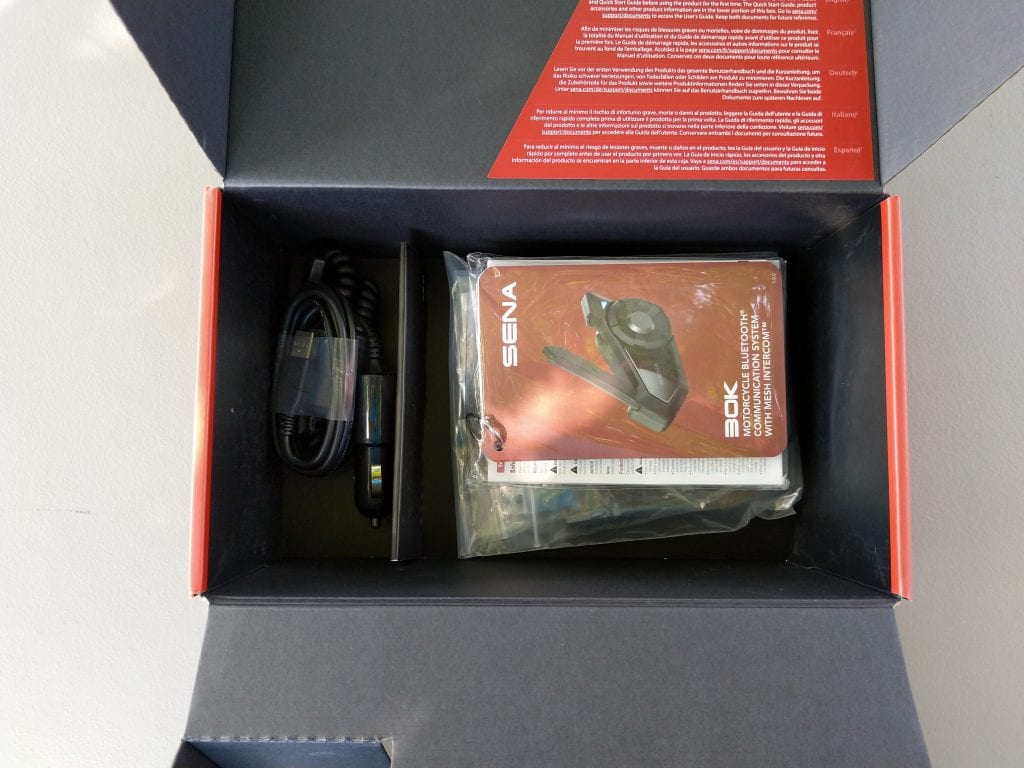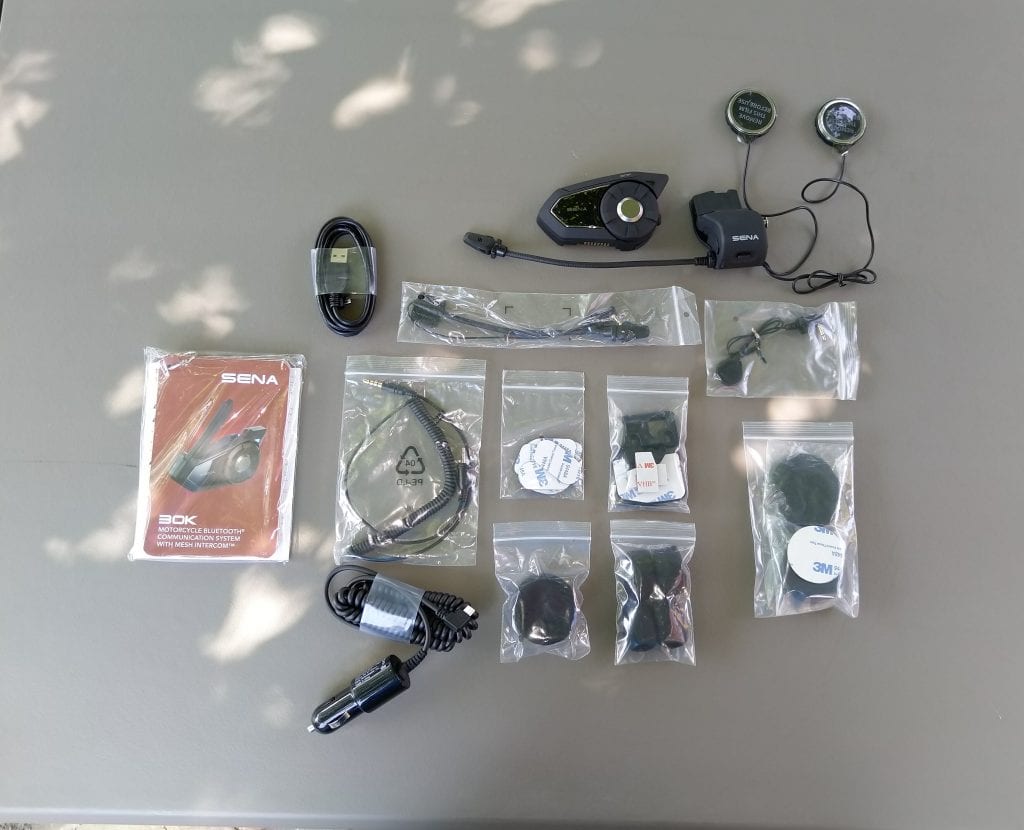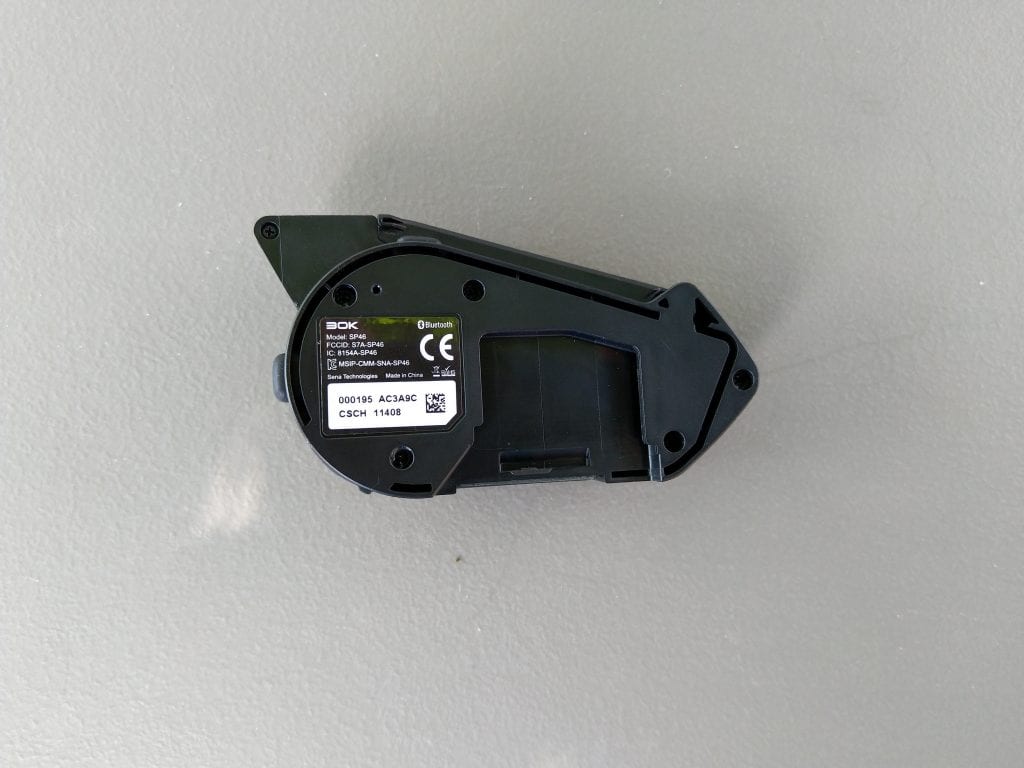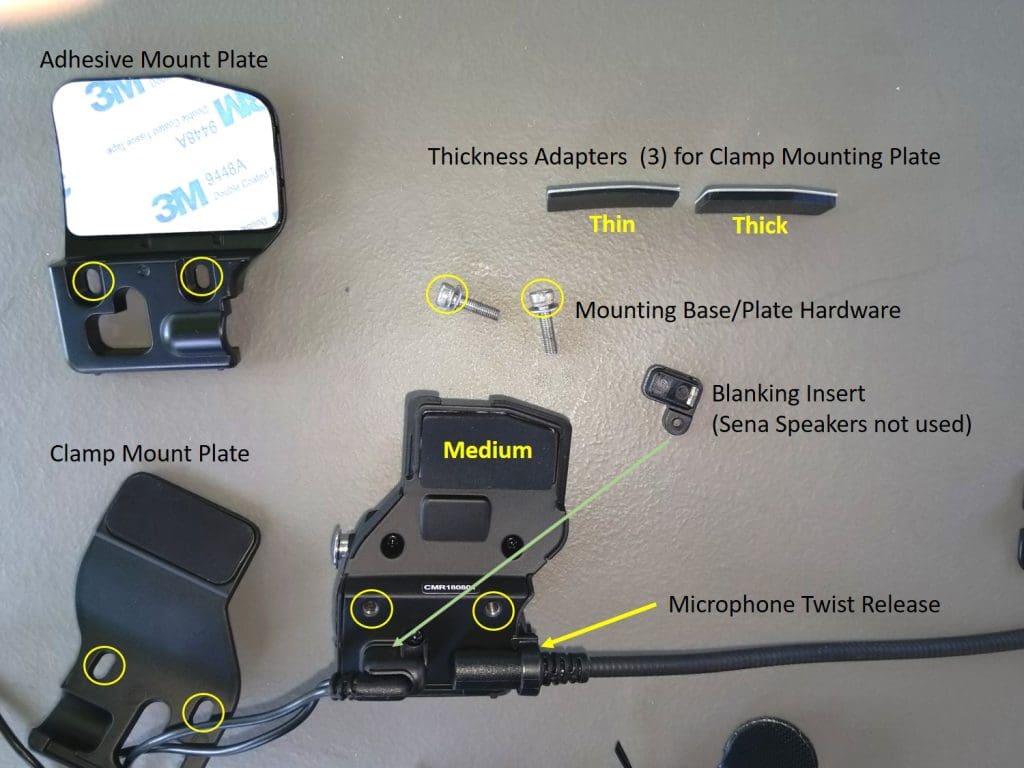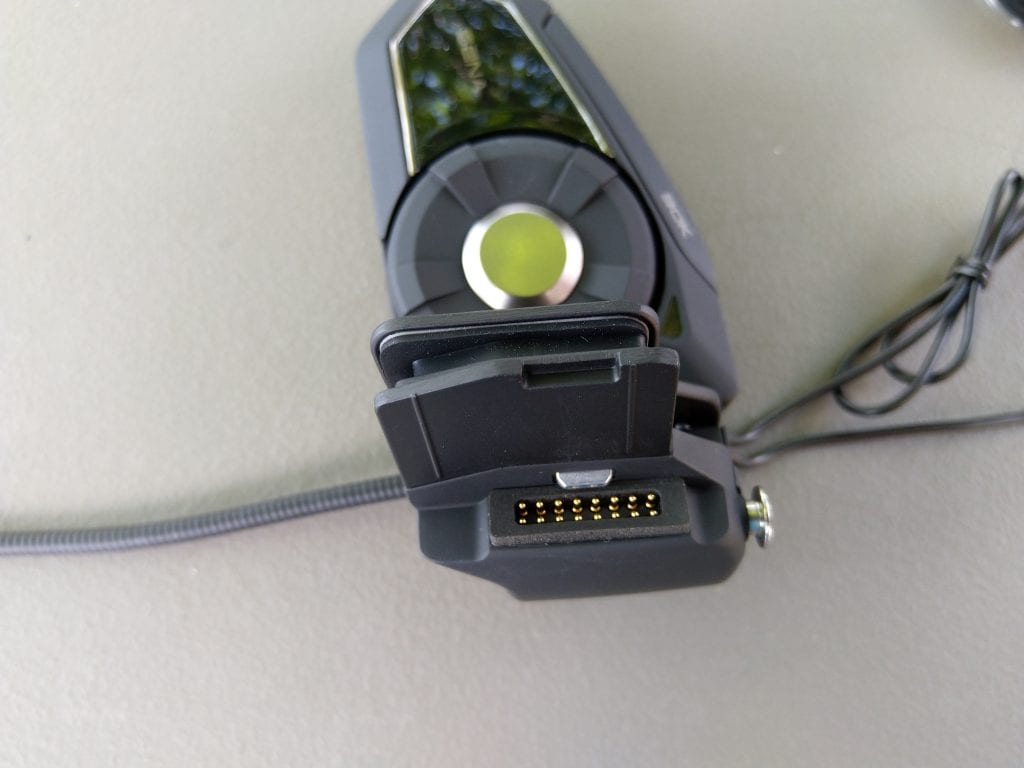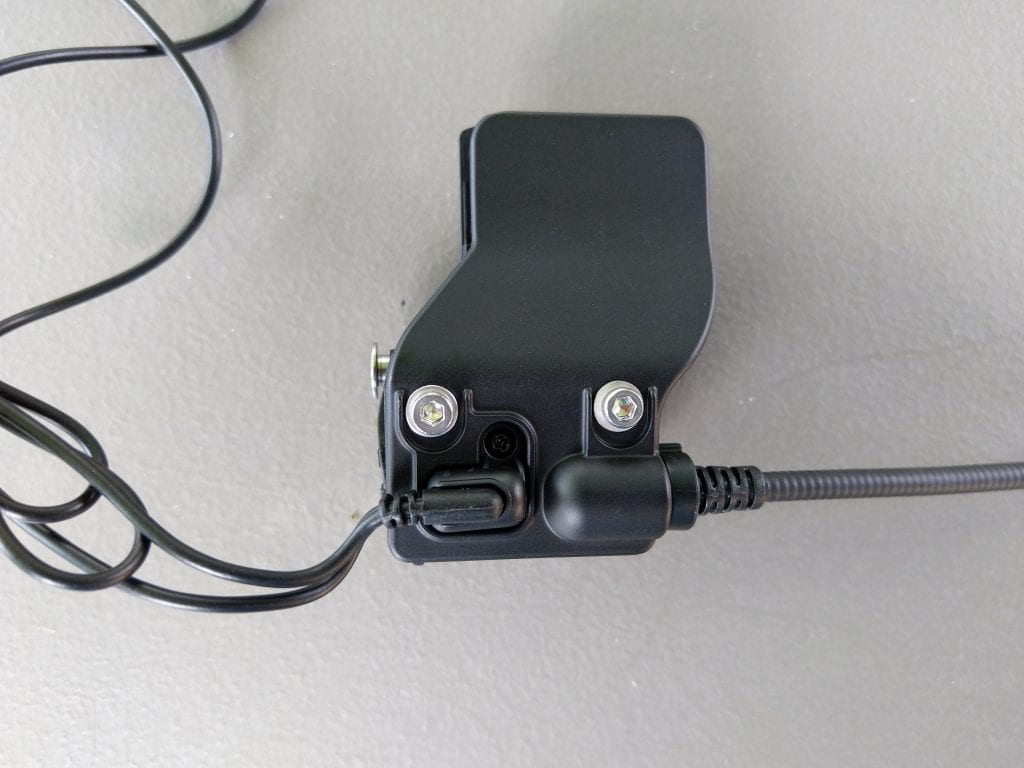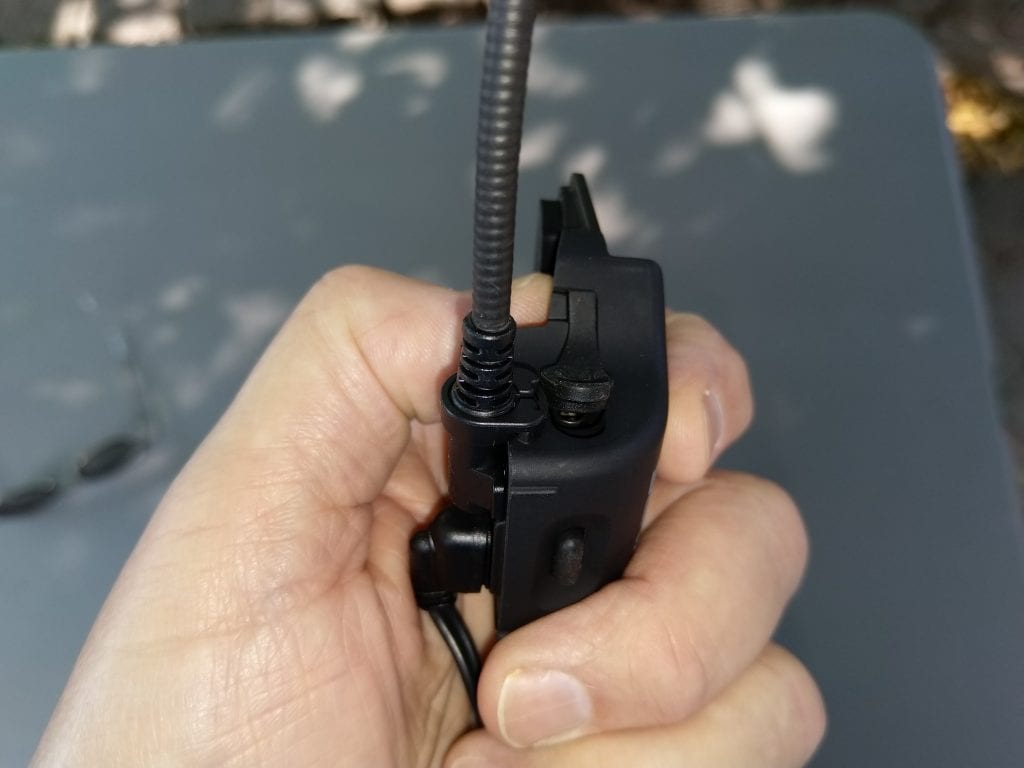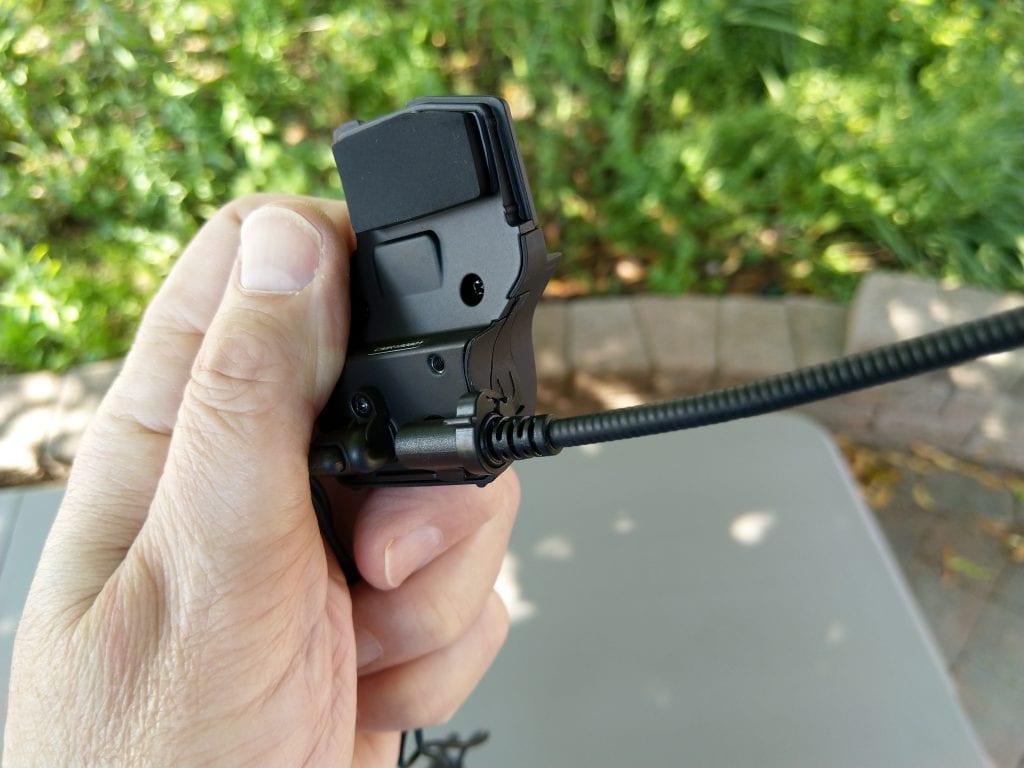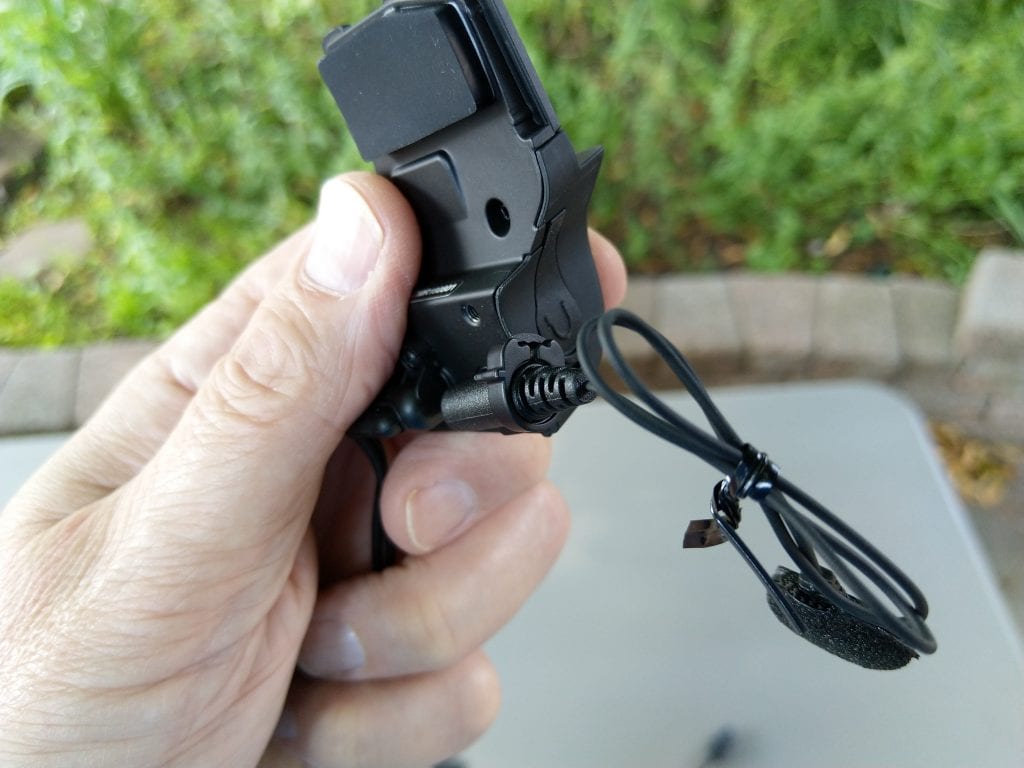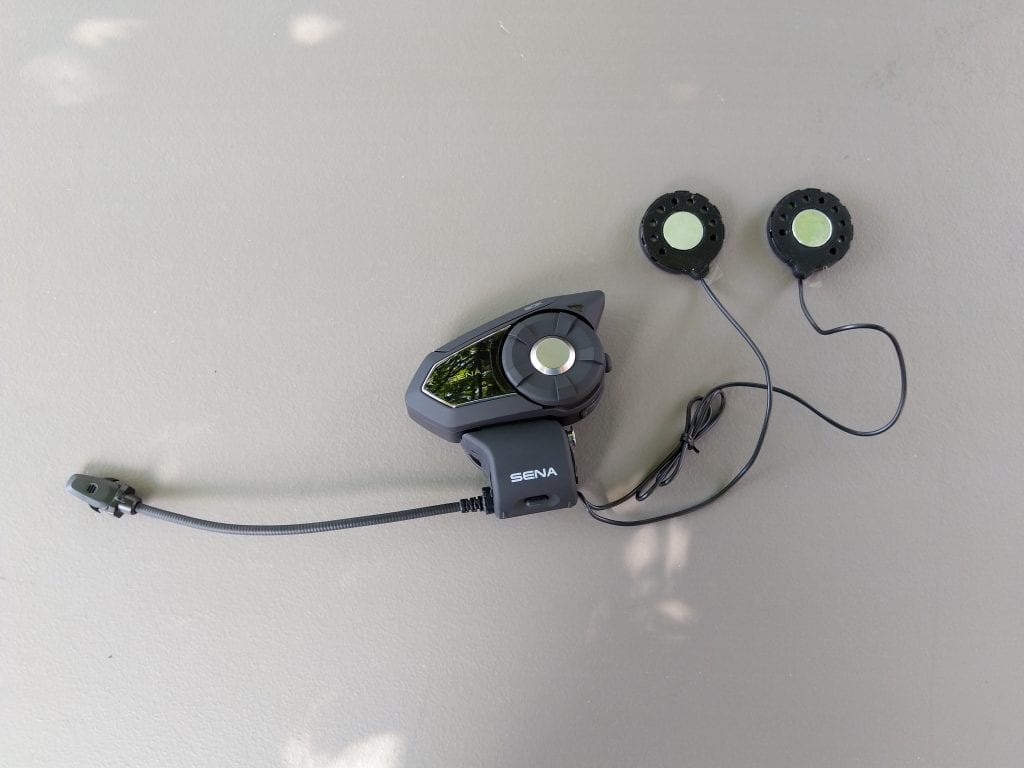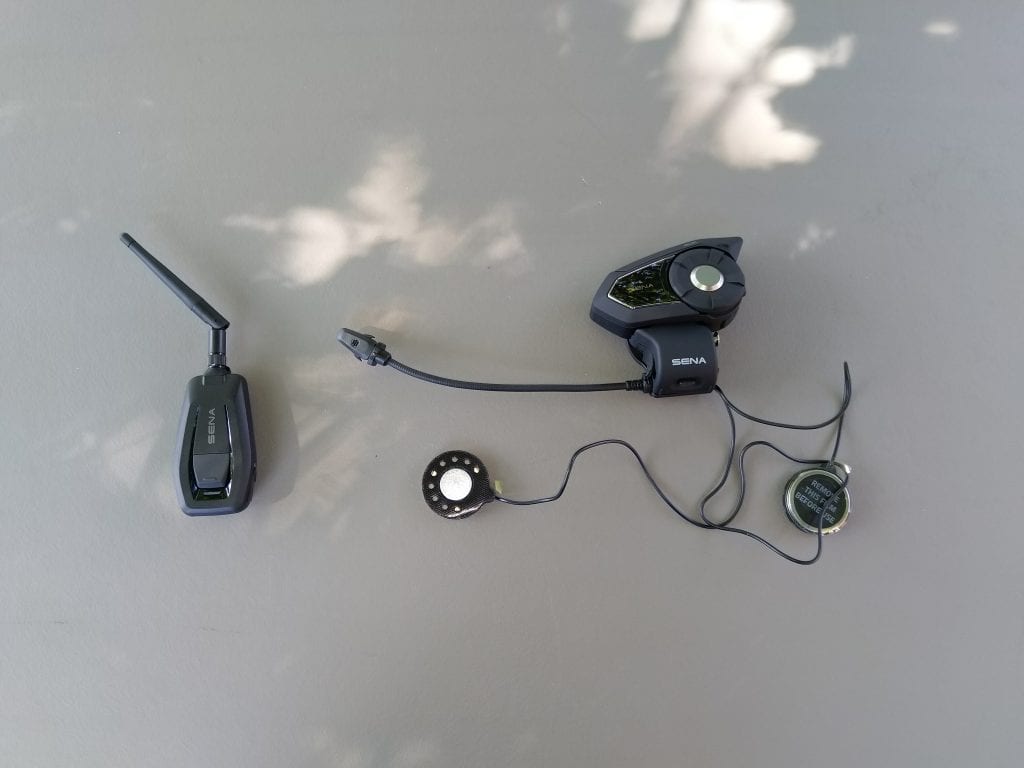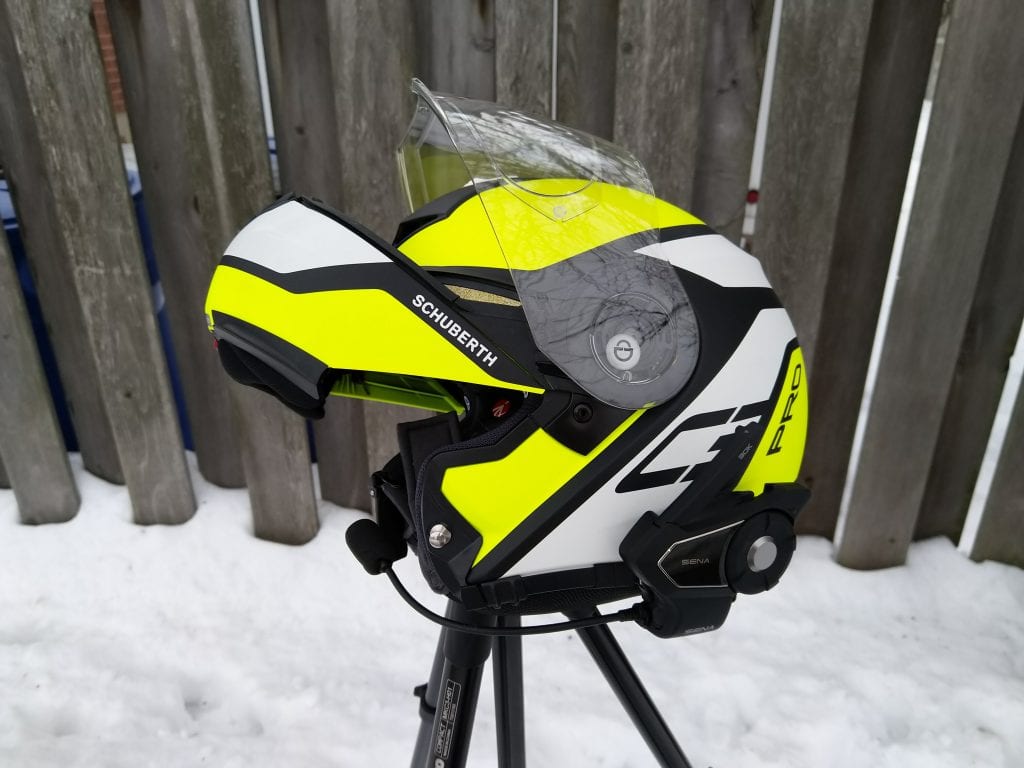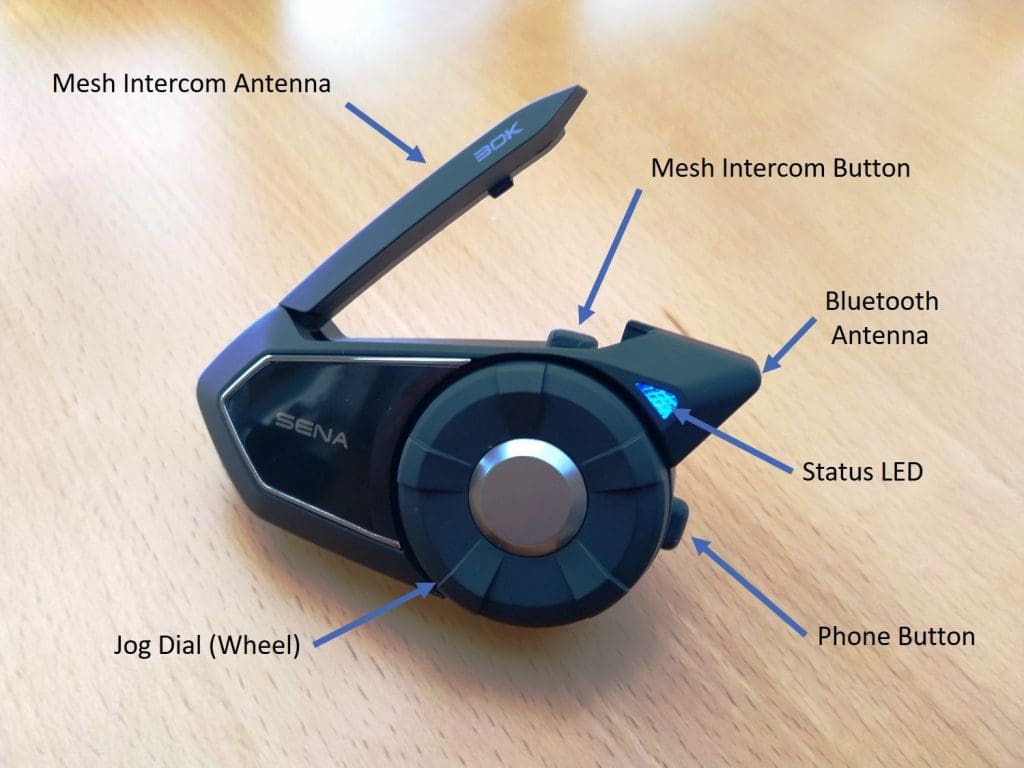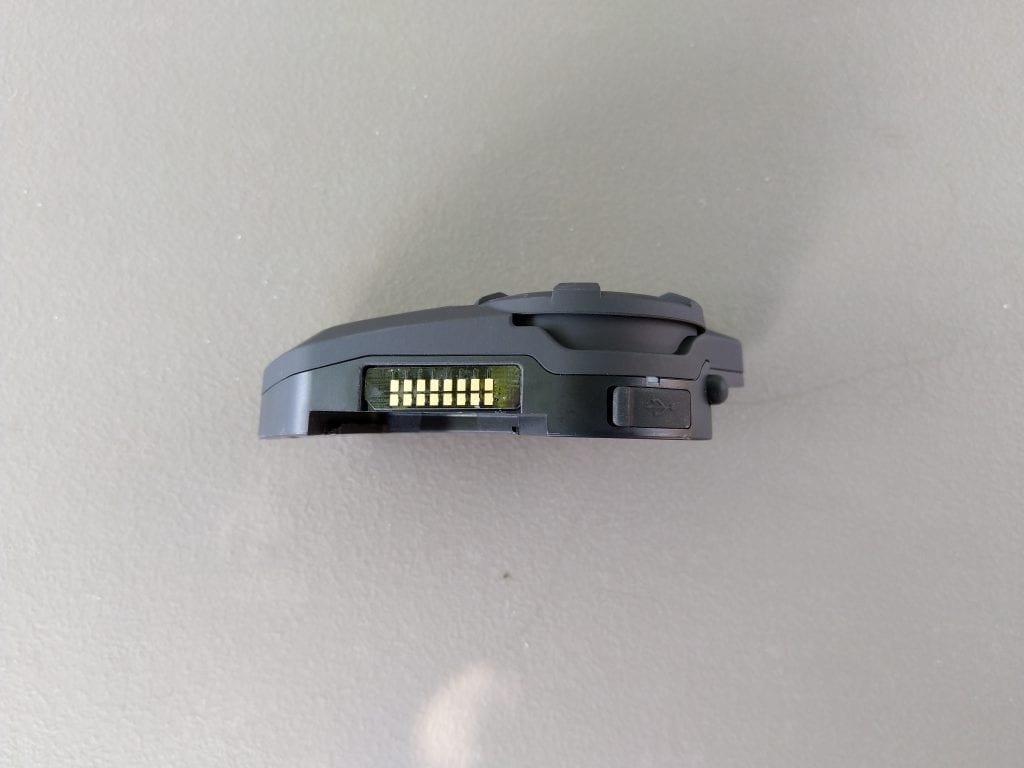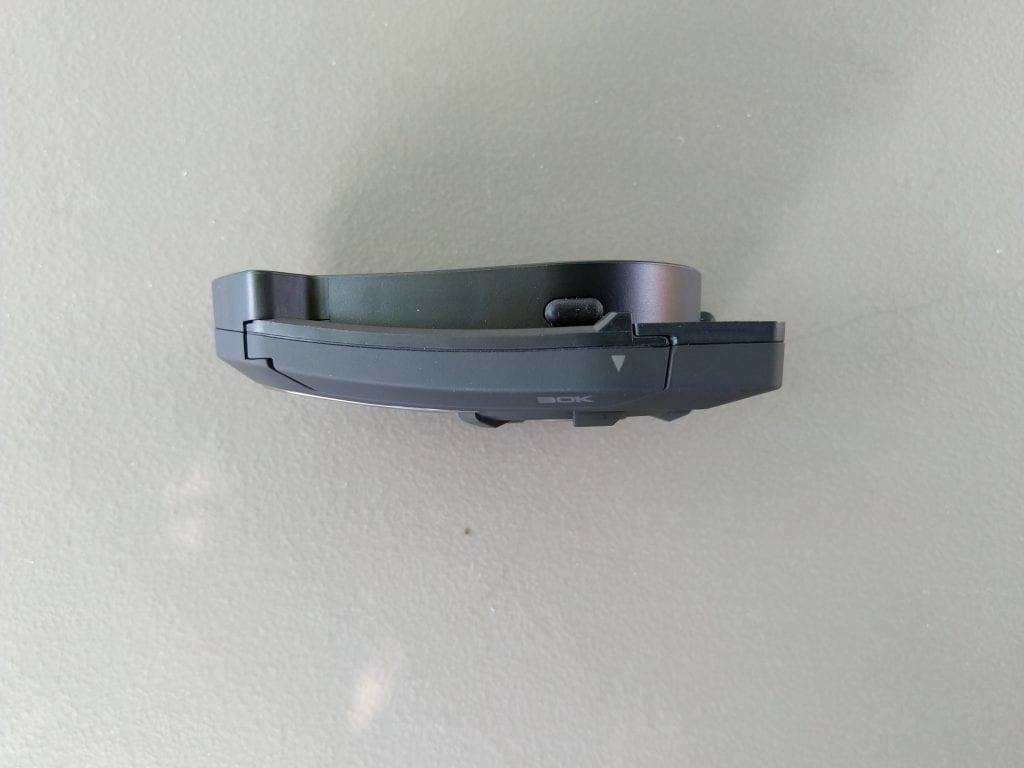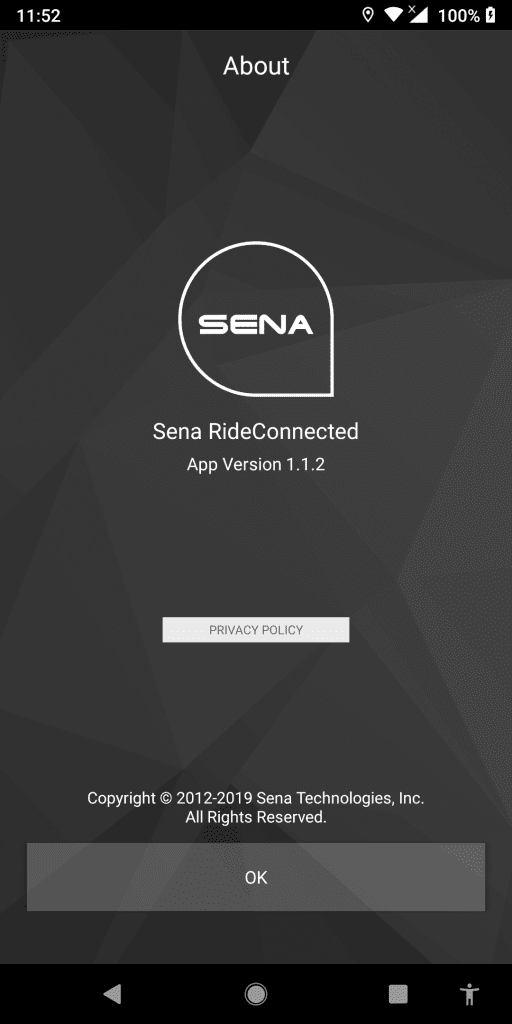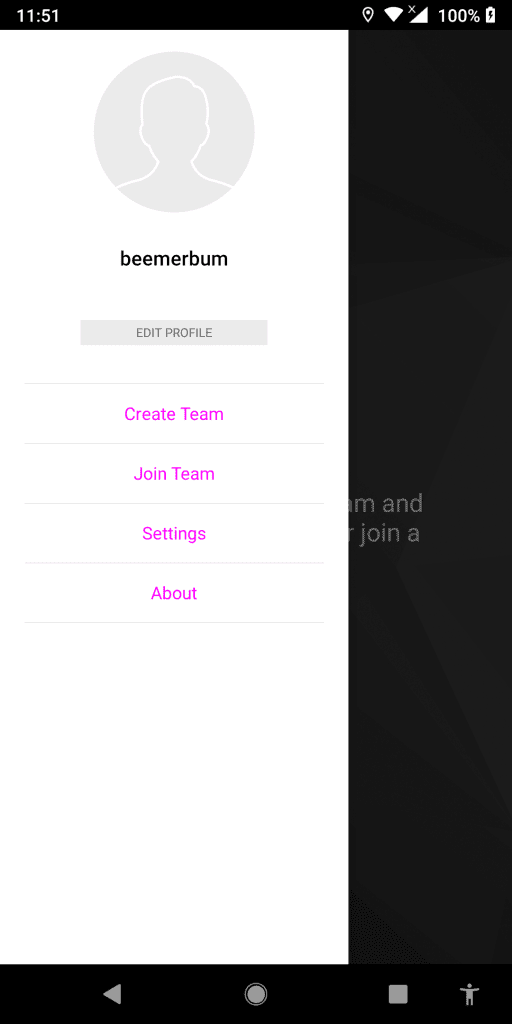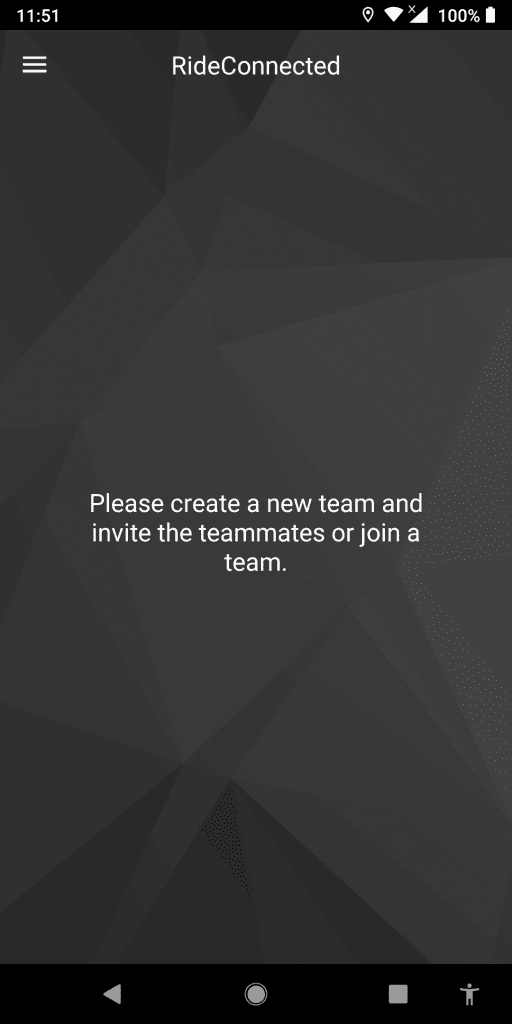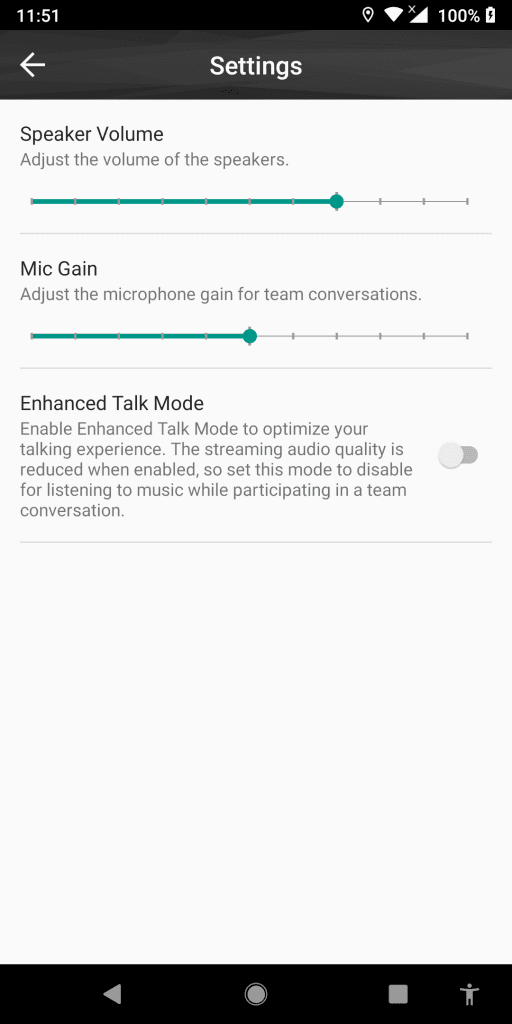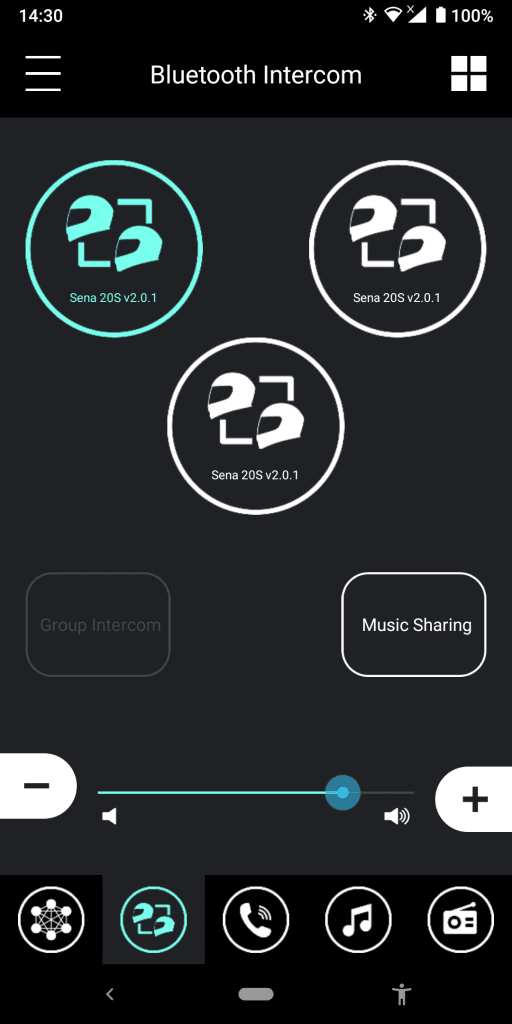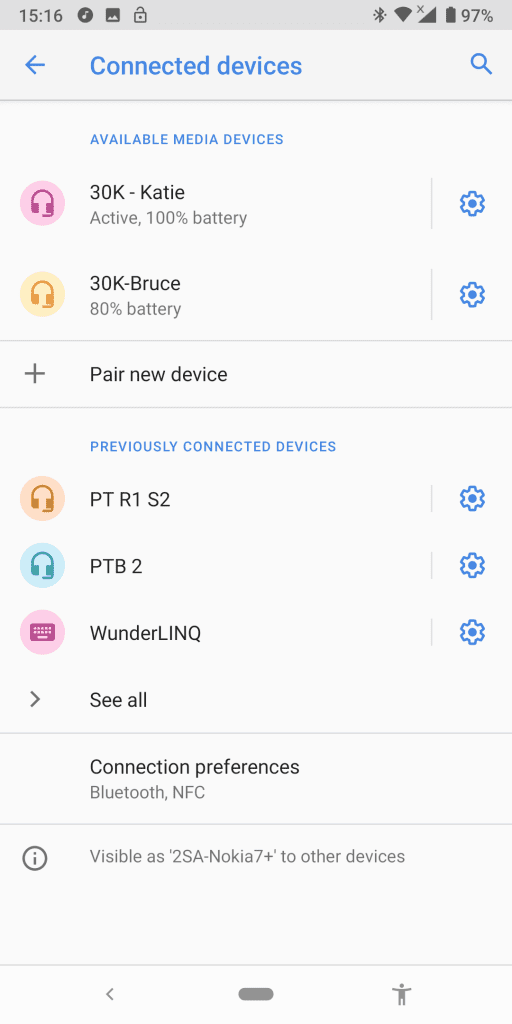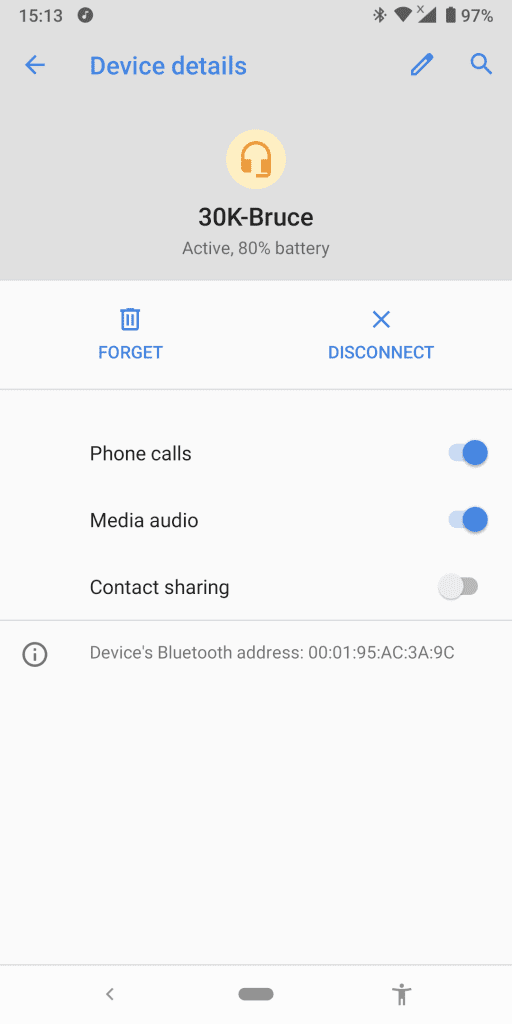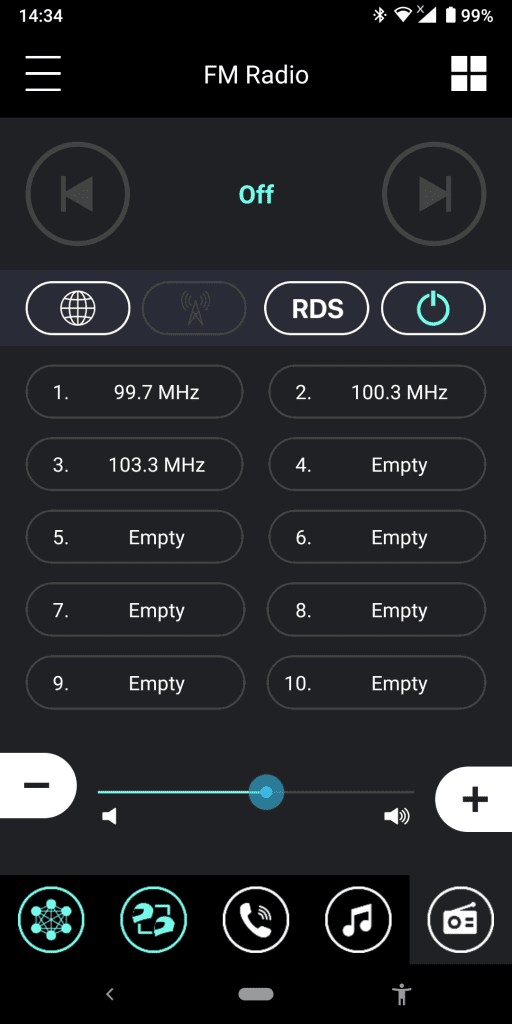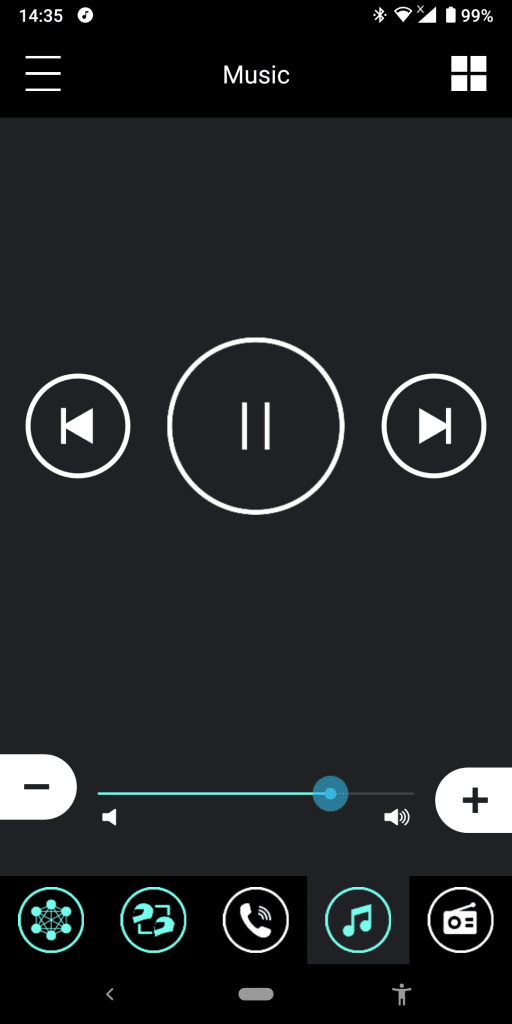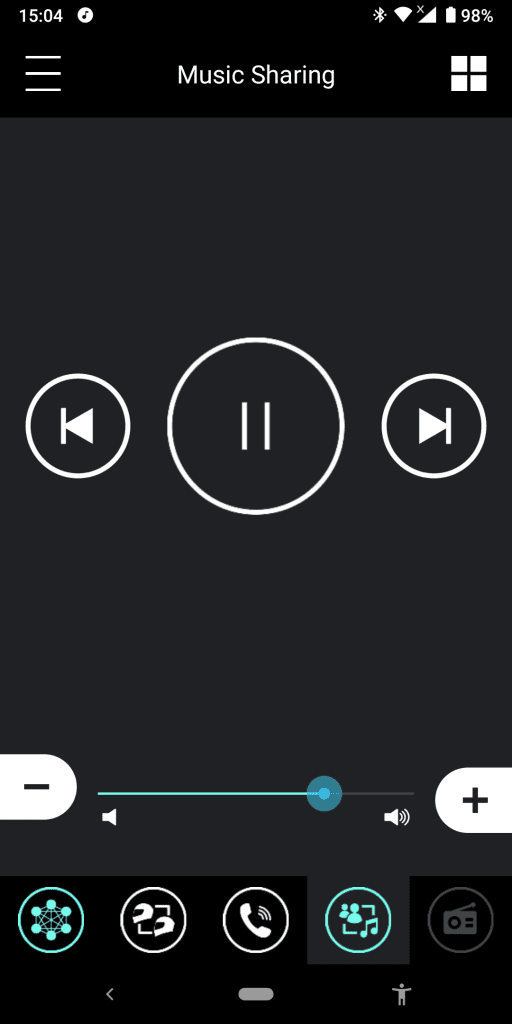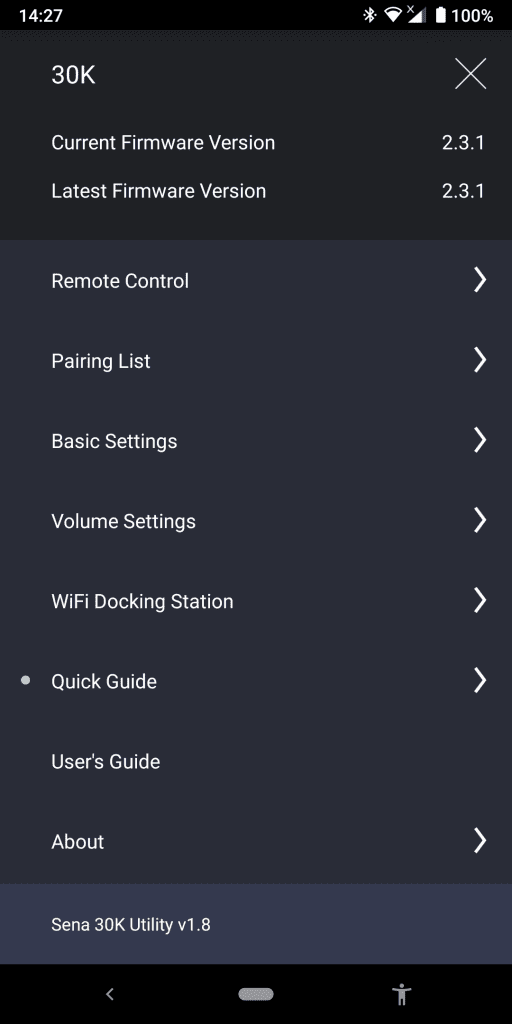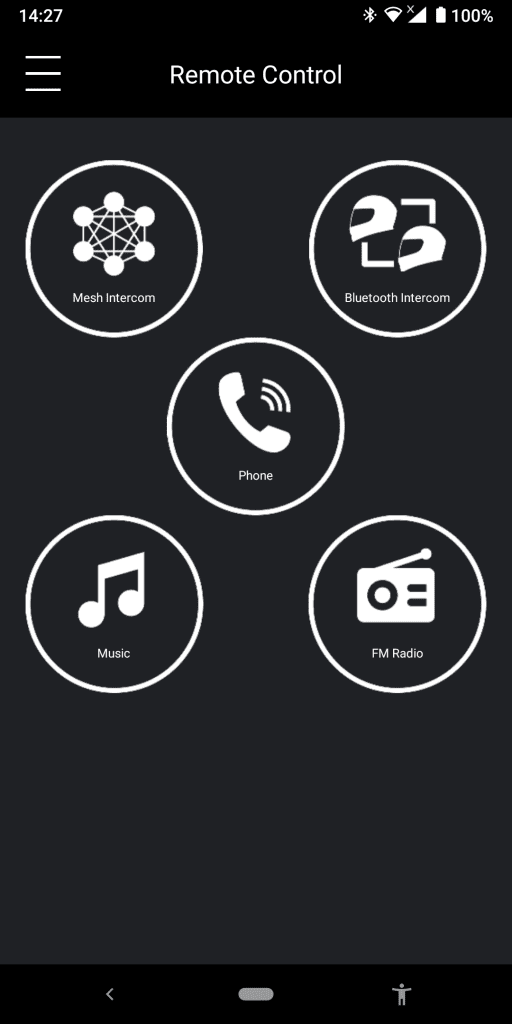Introduction
This long-overdue long-term review of the Sena 30K is being finished off as we begin a new year and a new decade and, coincidentally just as Sena announces the new 50 Series products featuring Bluetooth 5.0 and Mesh 2.0.
Once the new Sena 50 Series product hit the streets, the 30K system is going to be the second rung on the Sena model ladder; but I doubt very much if it is going to fade away into obscurity. Nor should it – there is no denying its valued standing among our diverse motorcycling community.
Although Cardo was first to market with their Dynamic Mesh Communication or DMC intercom in the original PACKTALK, Sena wasn’t far behind with the 30K and now we also have the UClear Motion Series DynaMesh systems.
As premium model offerings, these products require a substantial initial investment from buyers, but they also deliver on many (many) fronts and if properly installed, configured and maintained all of them provide tangible ownership dividends regarding device interaction, connectivity for communications and safety.
Every one of us, as consumers, riders and advocates, have our own unique requirements and preferences; and, we get to turn this to our advantage in being able to shop, compare, purchase and then defend our choices.
wBW has looked at and reported on the Sena 30K since it was first highlighted by Rick at one of the first AIMExpo shows and the most recent posting was Donna’s excellent Sena 30K Hands-On Review, published in December of 2018.
Over the last year newer systems featuring Bluetooth v4.2+ or like the UClear Motion Series and Bikecomm BK-T1 systems Bluetooth version 5 have appeared. These BT v5 based systems leverage newer technologies providing advantages in key areas; this is progress and as consumers, we drive it.
By the same token, current top-tier systems, including the 30K, didn’t build their standings based simply on features… and while some features and performance parameters are being overtaken by time and technology, the life cycle of these top tier systems isn’t over yet.
In using 30K systems almost continually since their release, installing or assisting in the installation of close to a hundred 30K units and getting real-world feedback from other users during training and travel, I regard the Sena 30K as one of the best examples of a helmet communication systems.
Sena – “Advancing Adventure”
The “Advancing Adventure” logo is an apt one for Sena. Since 1998 they have been an evolving presence in the wireless communications market, driven by a passion for technology and motorcycling. Since its first consumer BT system, the SMH10 (I’ve kept one functioning all these years), the company has developed and evolved the largest Bluetooth communication product line focused on outdoor and powersports activities, especially motorcycling.
With an expanding line of standalone and modular helmet systems such as the Momentum series helmets (with BT, Mesh, and camera features), the 10C EVO BT/4K camera hybrid, the Prism/Prism Tube WiFi camera products, the +MESH Adapter, and the numerous collaborative efforts with other helmet manufacturers… it isn’t hard to see how fully engaged, active and committed Sena is.
Relatedly, Sena, in my humble opinion, also has one of, or the most comprehensive firmware support program for their products, ensuring that no system is left behind, nor consumer investment marginalized.
It is truly impossible to address every issue and satisfy every user, but with the rare exception, the diligence shown by Sena in providing ‘bug’ fixes, tweaks, new features, and feature enhancements to the maximum extent possible for each and every system, including legacy products needs to be acknowledged.
As consumers and users, our responsibilities need to be addressed as well. In acknowledging that undertaking updates to a specific brand system are truly a personal choice, there are clear (proven) advantages to be gained in maintaining the systems we invested in.
Most brands have their own firmware update process, with varying degrees of complexity. But overall, firmware updates don’t or shouldn’t take a lot of time although admittedly there is a bill of sorts generated in downloading, installing and running applicable software;
And if the ‘bill’ regarding time and resources is heavy and if users do encounter issues (been there, done that) they will take a time-out or just forget about doing updates… an unfortunate but recognized issue.
Since (very) early on, Sena has recognized the value of maintaining their products and has always presented an easily managed means for users to update their systems – which is why the current Sena Device Manager has evolved into an easy to use comprehensive one-stop connected enabler for updates and product configuration.
Other products like the Sena WiFi Pack (Docking Station) that provide charging and manual or automatic updating and now, the Sena Intelligent WiFi Cable (bundled with the Momentum and Series 50 products) are set-n-forget connected enablers not offered by other brands.
Sena 30K Feature Listing (Compilation)
Like other top-tier systems, the 30K is feature-rich and technology-based – it has aged well in virtually every regard, with Sena remaining cognizant of the need to provide evolving firmware releases to exploit system potential and keep consumers satisfied; a hard thing to do it is said…
A feature summary with notes:
- Bluetooth 4.1 – BT Low Energy (BLE) with Enhanced Data Rate (EDR)
- Concurrent use of Bluetooth and Mesh intercom features
- Multi-channel audio multitasking with foreground/background overlay (as enabled)
- Bluetooth intercom range of 2km or 1.2mi claimed (and viable under ideal conditions)
- Closed Mesh intercom range of 2.0km or 1.2mi claimed (user to user) and 1.6km or 1.0mi for Open Mesh (multiple users), overall group range or reach can be up to 8.0km or 5.0mi with a minimum of six riders and ideal conditions (another capability validated)
- Group intercom ability – up to eight-way with BT and virtually unlimited using Mesh
- Music sharing in either Bluetooth or Mesh intercom modes
- FM Radio with Radio Data System (RDS) Alternative Frequency (AF) Setting
- Remote Control Compatible – placement options (handlebar, mirror, outer garment) for easier direct control access (less effort, less distraction, safer)
- Advanced Noise Control – as enabled background noise is reduced during intercom sessions
- Voice Prompts (input & status)
- Voice Command (‘Hello Sena’ for specific feature functions)
- iOS and Android Digital Assistant Interaction using Voice Command call
- Sena 30K Utility and RideConnected Apps for iOS and Android smart devices
- 3.5mm Auxiliary Headset and 2.5mm Audio Input ports
- Ambient Mode button – overlooked control/feature button on base, multi-functional for Voice Command mode, Group Intercom initiation and, Ambient Mode (outside/background) listening environment
- Long-life battery with charging on the go
30K Packaging
As with most single or duo kits on the market today, Sena provides everything needed, along with a few spare pieces, to get one or two users up and running without muss or fuss.
The listing: 30K main BT module, Universal Helmet Clamp or base with quick release, wired boom, thin wire (flexible) microphones, Adhesive Mount Adapter plate, foam speaker covers, hook-n-loop fastener pads for boom and wired microphones, microphone sponges (covers), foam speaker covers, speaker repositioning rounds, 3.5mm to 2.5mm auxiliary stereo adapter cable, micro-USB to Type A data/power cable, car adapter charging cable, and pocket-sized flip-style multi-language Quick Start Guide.
Mounting Base Specifics
The Sena 20S and 30K models use the same well-designed base with both clamp and adhesive mount backing plates. There are lower profile mounting solutions, but it is hard to find a mounting base that has the strength, security, and features of the 20S/30K piece.
Utilizing a vertical slide over and down approach along with a very positive engagement mechanism and positive action release button the Sena module to base mounting approach is very strong and secure.
Even if the lock releases for some reason the module isn’t likely to slide up and fall off, as seen with another brand system when the module went adrift (but wasn’t damaged) as it had not been properly seated at the front but had audibly snapped into place at the rear.
Where some systems use external in-line connectors for mounting the microphone and speakers, Sena uses 3.5mm and 2.5mm connectors plugged into base ports and secured with a twist-n-lock and screw mount for the microphone and a plate with screw for the audio connector. It’s very solid and secure, although the plate and base typically need removal for access.
Sena 30K with Boom Microphone Mounted
Sena 30K with Thin Wire Microphone Mounted
At the front of the base is a 3.5mm audio port for use with a third-part set of speakers, earbuds, or whatever (for testing I use an external travel speaker), while the 2.5mm input on the end is for a wired auxiliary device (a 3.5mm to 2.5mm adapter cable is provided).
Helmet Installations
Although multiple Sena 30K systems have been used for testing and other reviews since the product was first released, the one used specifically for this review is the one provided by Sena last year as a support system for the Sena +MESH Adapter review.
In doing a lot of 30K system installations on virtually every brand and model of helmet on the market (and some we don’t see here in NA), except for a couple of trickier-than-normal installations on hybrid helmets using custom earbud speakers, the 30K systems have always gone on and into the helmets with a minimum of effort.
As noted in the Helmet Installations section of the PACKTALK BOLD review, the oft-weakness of the adhesive used on mount plates is not exclusive to Cardo and for the most part, especially when moving systems over to a new helmet the heavier duty 3M VHB and interlocking 3M Dual-Lock solutions are used – with very few fitment failures over time, heat and distance.
BT Module – User Familiarization
The angled curved styling of the 30K module and its robust build approach is a positive visual. With its distinctive shape and size, it does have a bit more profile than other systems on the market when mounted to the base, but the combination has never been obtrusive on any helmet.
With the 30K module locked positively into place (listen for the ‘click’ from the locking tab), using the system is about as simple as it can get, at least from a physical interaction perspective. Sena’s standardized layout approach used over the years still works.
There are four primary controls on the face, top, and back, with a fifth on the bottom of the base mount piece (more on this one later). A honking big smooth-running Jog Wheel with Center Button dominates the face, with the back-mounted Phone button and top Mesh Intercom Button (MIB) rounding out the clearly visible controls.
The first three are easy to use while wearing light to heavyweight gloves whereas the MIB control is best accessed with the Mesh antenna raised first, a logical sequence anyway. Just push out on the small tab at the end of the antenna to activate the spring-loaded release. The Bluetooth antenna is housed inside the rear upper point of the module.
‘Buckle Up’ – to turn the Sena 30K system on, press the (back) Phone and Jog Wheel buttons for one second. “Preparing Headset” is heard first, then an ascending multi-tone cue followed by beeps as services activate and devices connect (if paired), “Phone Connected” is heard.
Another one-second push of the two controls triggers a “Goodbye” and descending multi-tone cue heard – the system is now off.
Other interactions with the system are through direct input, remote-control access, or by using the Voice Command feature, best initiated with a single push of the fifth control, the Ambient Mode button, or by saying “Hello Sena” (more on this ‘feature’ later as well).
Sena Firmware – A Perspective
The heart of systems like the 30K is firmware, that acts at the device’s operating system. Sena has long recognized the need to provide firmware that is evolvable and that can be fully exploited by users through easy to understand user interfaces; this is all good.
In spending a lot of time involved in high tech system development, testing and implementation along with having used every Sena BT helmet system and related peripheral in their product line over the years I have come to appreciate how versatile Sena’s firmware builds are. And once this versatility (breadth and depth) is understood, system functionality is better exploited.
30K Mesh Intercom Communications
To repeat a statement made in the Cardo PACKTALK BOLD review, “It’s not hard to imagine to a time in the near future where only Mesh is offered for user to user comms…”. And it seems Sena is working hard to expand the domain and shorten the timelines.
Sena has one of, if not the easiest to use Mesh intercom features with the 30K. And this Mesh domain expanded big time last year when Sena released the simple +Mesh Adapter that once paired with any Sena BT systems allows the user to join the Mesh intercom collective; and now, we have the new Momentum EVO with Mesh (one of which is sitting here awaiting review).
And wait, there’s more… the pending release of the Sena Series 50 systems featuring Bluetooth 5 and Mesh 2 with even more performance and more user options; the ‘near future’ scenario seems to be contracting.
Mesh Intercom: “One Click – Ride Connected”
The Sena Mesh feature or capability is a wireless mesh network or, for our purposes, a communications network made up of radio nodes or systems that dynamically manages itself to ‘self-organize’ and ‘self-configure’. Network dynamics are maintained while it searches for and automatically adds or reconnects users within range.
Each node or system connects directly and dynamically in a non-hierarchial manner to as many users as possible. All nodes or systems route data between themselves and share the network load for efficient and effective fault-tolerant capability.
The Sena Mesh feature supports (virtually) an unlimited number of in-range users in Open or Public Mesh mode and 16 users or unlimited guests in Private or Closed Mesh mode. Additionally, up to three BT intercom users per 30K can be brought into the Mesh collective using Mesh/BT bridging.
Open or Public Mesh Mode
Raise the Mesh antenna, push the Mesh Intercom Button or MIB once and within seconds any other Sena mesh-enabled system within range automatically joins the Public Mesh – done.
Six users can talk at the same time with the rest listening and awaiting an opportunity to chime in (ah, ye olde party line). And users can freely connect/disconnect (come and go) within this mode without upsetting the apple cart.
Public Mode Note – given the auto-configuring dynamics of the default Public Mode, connection information is not saved by the systems.
Private Mesh Mode
When or where a ‘closed’ session is desired, often between specific users or a small group, a specific Mesh session needs creating and in doing so the user switches from Public to Private Mode. In Private Mesh Mode, a maximum of 16 (Lead and 15 others) is allowed, with the same six uses talking at the same time limitation.
Private Mode Notes
- connection information for a Private Mode Mesh is automatically saved to the headsets for future (Private) Mesh Mode activities, and
- participants in a Private Mesh cannot listen to users communicating in Public Mode
Guest Mode
This specific ‘settings’ menu option, accessed through the Sena Device Manager or 30K Utility App and as enabled allows guests to ‘listen’ to Private Mesh Mode communications but only if the Lead enables Guest Mode before creating a Private Mesh Mode. There are other conditions fully detailed in Section 7 of the Users Guide.
Users can ‘move’ or toggle between Public Mode and Private Mode without quitting Mesh mode, allowing users to keep the Private Mode connection information while participating in Public Mode communications. A three-second push on the MIB is the toggle. Section 7 of the Users Guide provides lots of insight into these and related activities.
30K Bluetooth Intercom Communications
And before you think I’m calling ‘toast’ on the Bluetooth Intercom, perish the thought. This original serial-based medium is very much alive and well, although admittedly we will see a real swing or push for Mesh Intercom to become the main-stream option.
But in the here and now and for the foreseeable future a Bluetooth Intercom capability will remain a big part of our collective communications environment, as it should; and, so far all the dual-mode main systems provide the means to ‘bridge’ the Mesh and Bluetooth features.
BT Multi-Party Intercom
As with most helmet systems, the Bluetooth Intercom feature can be used for a two-way or multi-way session (Lead plus three) once properly configured. A three-way can also be set up with a phone caller for conferencing purposes.
BT Group Intercom
With two or three systems previously paired with the Lead, the BT Group Intercom feature can be invoked quickly. Press the Ambient Mode Button for one (1) second – the LED flashes Green and “Group Intercom” is heard. When all systems are connected, “Group Intercom Connected” is heard. Press the Ambient Mode Button for one (1) second again to end the session, “Group Intercom Terminated” is heard.
BT Universal Intercom Interface
As with virtually all helmet systems on the market, the Sena Universal Intercom feature allows communications with non-Sena BT systems, although it is limited to only one non-Sena system at a time and the overall intercom range will depend on the systems in use. Using this feature also disables the Second Mobile Phone Pairing if in use.
Accessing the Universal Intercom feature is done by holding the Jog Wheel center button for ten or so seconds and when “Configuration Menu” is heard, navigate the Wheel forward to the “Universal Intercom” and press the ‘Phone’ button once. Put the non-Sena BT system into its standard device pairing mode – pairing/connectivity is usually done in a few seconds.
If the Universal Intercom link is not active after this, press the Intercom (Jog Wheel Button) once to activate the last-in (Universal) intercom link; press the control again to stop it.
Universal Intercom Note – control is typically held by the initiating headset, e.g. the 30K, but some non-Sena headsets allow a Universal Intercom session to be open or closed by activating their respective phone/device button or even their intercom mode control… it pays to play.
Dual-Mode Intercom – Bridging
As with the Cardo PACKTALK DMC Intercom Bridging feature, the 30K can bridge between BT and Mesh intercom features bringing BT users into the Mesh collective.
On one occasion, in preparing for a group ride, some of the same riders who were part of the PACKTALK BOLD review ‘MUG’ (Mesh User Group) now became willing members of the ‘SMUG’ (Sena Mesh User Group).
In about two minutes, each of the three 30K users that had been communicating via Public Mesh got paired to a Sena BT system user, with another one added by a BT system to Sena +Mesh Adapter pairing. The end, or rather start state, saw seven Sena users configured and communicating in our hybrid Mesh intercom collective.
And in knowing that audio quality will or can be reduced if a 30K connects to two or more BT intercom systems while in Public or Private Mode, the single pairings kept intercom audio performance-optimized, less some range limitations of a couple of the (old) Sena systems.
Intercom Bridging Note – regards an issue also found with some 30K and +Mesh configurations (experienced first hand) in that users need to avoid creating a ‘Closed Loop’ configuration (30K to 30K and both to a BT system) as it will cause feedback/noise issues. Keep separate open-loop configurations as detailed above.
Intercom Performance
Insight and experience reveal that helmet system intercom use, range, and reliability is very much dependent on how healthy the system battery is and whether or not you raise the Mesh antenna during use. Failure to utilize the antenna is one of the most common performance issues I see… failing to keep the systems (properly) charged is next…
Bluetooth intercoms (especially BLE systems) are very power efficient; Mesh-based intercoms not so much, as many users find out. And don’t forget the impact other audio activities like continuous music streaming or ongoing phone use have.
Overall, the Sena 30K BT and Mesh intercoms live up to the claims made by Sena and even exceed them under ideal conditions, especially on the BT side of things. But admittedly, in dense urban environments, range and clarity will be reduced, sometimes significantly, particularly when using BT intercom.
The Sena 30K has one of the best overall intercom range capabilities tested. But Sena’s link quality and resultant audio are (typically) not as good compared to the BT and Mesh intercom features of the PACKTALK, UClear Motion Series or, my current BT intercom range and clarity champion, the Bikecomm BK-T1.
In the real-world, on relatively flat and unimpeded terrain and with an uncluttered electronic environment, the Sena Bluetooth intercom ranges of 1.5km to 2.2km (measured) are possible and even with hilly terrain/mixed cover conditions maintaining communications at 800 to 900m isn’t an issue – distance performance I haven’t yet gotten out of the PACKTALK systems.
Like other Mesh-based intercoms, Sena’s Mesh node to node (user to user) link ranges are shorter than Bluetooth – not totally unexpected as best-path and multi-hop efficiencies with only one, two or three users are limited.
In a larger multi-user Mesh environment where the best features of a mesh network are exercised, communications over four to five km and beyond can be the norm (experienced it) and as a side benefit of sorts is that some natural and man-made BT intercom inhibitors are minimized (thanks to Mesh’s functional attributes).
Another scenario received with some skepticism but subsequently proven on a club ride regards how Mesh or hybrid intercom environments can be of benefit regarding multi-path or off-road environments where multiple riders (lead, following, tail, or on divergent paths) over varying terrain can stay connected with Mesh or a mixed Mesh/BT environment.
Device Pairing & Connectivity
For the record, thanks in large part to its sophisticated firmware, the 30K can and has paired, and connected, with almost anything put in front of it – smartphones, smart devices, navigation devices, BT-based hubs of onboard motorcycle systems, external wired/wireless media players along with any of Sena’s adapters, remotes, etc.
About the only issue encountered and one that seems to persist relates to proprietary implementations and interface limitations often experienced with iOS-based devices, including those running iOS 13+.
Sena’s 30K firmware v2.3.1 release fixed most of my niggles experienced with iOS 13.2, but in now purposely moving up to iOS 13.3 some issues have arisen again – and it is frustrating for all parties involved.
For what its worth, I’ve never had an Android-based device (old or new) refuse to pair and connect for audio services with a Sena 30K. But having said this, I know that other experiences have varied from mine…
Overview
No matter if pairing and connectivity requirements are simple or complex, the 30K is up to the challenge. Other dual BT systems also support multi-device environments, but the Sena 30K remains my favorite test and use platform due to the versatility and flexibility of its firmware.
In an effort, to keep the length of this submission reasonable, a detailed walkthrough of how to work with one too many devices isn’t provided here as there is a wealth of visual and documented information available regarding the 30K in print or online.
One to Multiple Device Pairings
Where requirements are simple, such as using a single smartphone or smart device to provide multiple audio tasks, getting the 30K paired and connected is, for all intents and purposes, a one-step activity.
To pair, connect and manage multiple devices, the Sena firmware provides the means to set up a dedicated connectivity relationship with a specified device so that only specific functionality or BT profile services are provided (more on this under Audio Connection Services).
Selective Pairing for Second Mobile Phone – this provides for a second smartphone or other primary devices, like a standalone navigation device (zumo 590/595) that can act as a BT connection hub for phone, media and, navigation audio services.
Advanced Selective Pairing – provides the means to more fully exploit the dual BT and multi-channel audio capabilities of the 30K. This option supports both the Hands-Free (HFP) or Advanced Audio Distribution Profile (A2DP) profiles but adds the ability to separate these two profiles into discrete connections for two devices (perfect for dedicated audio services).
GPS Pairing – where navigation or related (mono) audio from a GPS device needs to be added to the configuration mix, using the specific GPS Pairing function works well. Once paired in this way, audio from the device does not interrupt but rather overlays with Mesh Intercom audio; but does interrupt BT Intercom audio.
Some Pairing Points
- Newer smartphones or devices running newer versions of Bluetooth provide pairing, connection, and BT profile services that complement multi-channel systems like the 30K.
- Navigation Device use – newer models of the Garmin zumo series, TomTom and BMW Navigator V/VI models function as BT hubs, supporting audio services from smart devices paired directly to the navigation device; as such they can be paired using the primary or secondary mobile phone steps and once paired, select/deselect the desired BT profile or audio connection services from the options identified.
- Sena, like some other brands, goes to lengths to address and resolve specific third-party interface issues, as seen with early BMW Motorrad BT features and even the more recent BMW Motorrad Connectivity; as such some firmware versions actually identify optimization settings for specific third-party features.
- Audio Connections – with newer smart devices, users can select/deselect specific BT profile/audio services (see navigation point above) for hands-free, headset, music streaming (including AAC), intercom, phone book access, etc., for customization efficiencies between devices and/or more effective use of the Selective or Advanced Selective Pairing steps.
A Sample Multi-Device Pairing Approach
- Pair 30K to BMW Connectivity hub or onboard system using Primary Phone Connection
- Pair 30K to Navigation device (Navi V or VI) using Secondary Phone Connection step or, if only basic navigation audio is needed, use the specific GPS Pairing step
- Pair Smartphone/Device to the BMW Connectivity or other onboard systems
- Pair Smartphone/Device to the Navi V or VI, select/deselect available audio services
- Pair 30K to other users directly (not through onboard system), and
- If BMW Comms System/Systems are used Rider and Passenger should be paired to the BMW Connectivity hub
Note – this is just one multi-device approach and the user still needs to appreciate activation timings between the different paired devices; this is where your experience may truly vary. Regardless, always confirm pairings and audio connectivity before starting off – safety is paramount.
30K Audio & Audio Management
Sena’s 40 x 6.5mm speakers are an easy fit into virtually any helmet and they do provide good frequency response and clarity at any output level. But they are just ‘good’ and lacking when compared to speakers used with other systems like the PACKTALK, Bikecomm BK-T1, and UClear Motion Series products.
As plain and lacking as the Sena speakers are, they do measure up in regarding volume levels. In early days, they were lacking output volume along with limited user control. Default boot-up and voice prompt announcements were just plain painful… an issue not totally resolved yet.
Subsequent firmware releases, audio enhancements and fine-tuning provided very noticeable positives regarding audio quality and output. With ear protection in place (the norm), audio remains good although adjusting the Jog Wheel back one or two steps to add some output is needed as speed and ambient noise builds.
Even inside the Schuberth C3 Pro a very quiet helmet that often allows volumes levels to come down a notch or two, any semblance of lower tones is lost as speed and noise levels build dramatically impacting the feel of your favorite tune.
I’m hoping that the Series 50 HD speakers will be the audio performance boost needed and perhaps become available as an accessory refit for other models…
Audio Multitasking
The 30K dual Bluetooth processor approach provides multiple channels for audio multitasking that allows users to have a Mesh or Bluetooth intercom conversation while listening to a music stream, FM radio or GPS audio, with foreground/background volume layering (depending on configuration and settings).
The ability to adjust foreground/background or overlaid audio levels or even disable the feature is provided by the Audio Multitasking feature found under the ‘Settings’ menu and accessible via the Sena Device Manager or the Sena 30K Utility App.
There are two components to this feature, the Intercom-Audio Overlay Sensitivity settings with five sensitivity levels and, the Audio Overlay Volume Management settings, a simple Disable/Enable selection.
To address Intercom-Audio Overlay Sensitivity (Intercom conversation with music, FM radio, GPS audio overlaid) the user can select Level 1 (the lowest sensitivity regarding intercom conversation audio) through level 5 (the highest). *Note – if the user’s voice is not louder than the sensitivity selected then the overlaid audio will not be reduced in volume.
The other setting, Audio Overlay Volume Management is a basic Disabled or Enabled selection:
- Disabled (default) – the overlaid music, FM radio or GPS audio reduces in volume whenever there is an active intercom conversation, based on the selected sensitivity level and,
- Enabled – the volume level of any overlaid audio is not reduced during intercom conversation
There are other settings available regarding Audio Multitasking, all visually laid out in the Quick Start Guide and textually in the Users Manual that should be understood as they can impact audio multitasking and audio output performance.
Music Sharing
The Sena 30K provides what seems to be a popular feature with many users – the ability to share and manage a music stream with one other BT intercom user or one participant in Mesh.
Starting the music sharing process when both the BT and Mesh intercom is active (bridged) results in the BT intercom share taking priority over Mesh music sharing. The following scenario illustrates how things work.
Systems ‘A’ and ‘B’ are 30K Mesh intercom users and ‘C’ is a BT intercom-based user. If ‘A’ and ‘C’ are communicating using BT, system ‘A’ (the Lead) initiates the music share to ‘C’ by pressing the Jog Wheel button for three seconds, “Music Sharing on” is heard.
After a (sometimes) short delay and a couple of beeps, music sharing starts between ‘A’ and ‘C’. Either of the users has AVRCP control (track forward/back) of the shared stream… an ability that may or may not lead to other things… In this BT-based sharing activity, intercom communications are not available (resource limitations).
For Mesh music sharing, system ‘A’ (the Lead) activates Mesh Intercom Music Sharing (same step as for the BT Sharing), “Music sharing on” is heard and with a couple of seconds, the Lead system sends a request message out, “Would you like to accept music sharing?” to the other Mesh connected system/systems.
If 30K user ‘B’ taps their MIB once the offer is accepted and the music share starts. To reject the offer, the MIB is pressed for one second. Point to note – once the Lead sends the request out, the Mesh Intercom Music Sharing is activated to the first system accepting the invite…
Note re Music Sharing – the Sena 30K can only share A2DP, not FM Radio as well.
Ambient Mode
An overlooked but valuable safety feature. Activating this mode with a double push of the easy to find button on the bottom of the base mount serves to mute all helmet audio and accentuate the ambient (outside) audio environment; it really works.
The Ambient Mode button also serves two other purposes. Pushing the button once activates the Voice Command feature, with the “Say a Command”, repeated three times and if there is no audio input detected, “Cancelled” is heard. My thoughts about the functionality and usefulness of the Voice Command are found below…
Lastly, the Bluetooth Group Intercom feature is initiated by using this button, although a longer one (1) second push is the activation rather than the quick single or double push for the functions described above…timing is everything.
Voice Command
The Sena 30K Voice Command feature is enabled or disabled under the ‘Settings’ menu using the Sena Device Manager, the 30K Utility App or directly via the BT module controls.
In being somewhat direct here, the Voice Command feature of the Sena’s systems, particularly for the (20S) and the 30K is virtually useless, particularly when compared to the superlative Natural Voice Operation capabilities of the Cardo Scala Rider PACKTALK series systems.
No matter what I do or how I speak, in quiet to noisy cockpit/helmet environments it is almost impossible to get the Voice Command to activate by saying “Hello Sena” (any pronunciation) and, nine times out of ten, even after manual activation with a single push of the Ambient Mode button, there is no response to my input.
On the odd occasion when input has been accepted, one or two commands will be executed, then nothing – the system seems to go into a freeze-up, often necessitating a long wait for restoral or by turning the module off and on.
In being able to do almost anything with the PACKTALK systems using the Natural Voice feature even in noisy cockpit/helmet environments, my frustration with what I see as a failed Sena feature is very real.
Sena 30K Utility App
Sena has implemented several different Apps for their systems over the years, with the Sena 30K Utility being the latest all-in-one offering that along in addition to featuring 30K services has support for related accessories like the WiFi Docking Station and Sena Remotes.
Available for ioS and Android devices, but specifically focused on smartphone use, this latest iteration has a more utilitarian look and feel than previous versions; but it is identified as the Sena 30K Utility App – function over form perhaps, which is OK with me.
The primary settings screen identifies the current device firmware installed and the latest firmware available, while the bottom information identifies the App version, currently at v1.8.
Users have access to Remote Control and WiFi Docking Station selections from the main settings screen. Spending time and visiting all the selectable menus is worth the while, especially if getting to know the 30K and trying out its features.
The user can do a lot of configuration, housekeeping, and management directly from the 30K Utility App including building up Bluetooth and Mesh configurations using the ‘Remote Control’ menu, but the Cardo Connect App is more sophisticated and encompassing in its functionality…
Some Sena Extras
Sena is not unique in offering accessory products, but it would be hard to find another brand that offers the same breadth and depth regarding accessories -all available to enhance the Sena product ownership experience. Some of the available accessory pieces are:
- Slim Speakers – compatible with 20S, 20S EVO, and 30K, these pieces (PN SC-A0323) are a slimmed-down rendition of the standard kit speakers
- Remotes – a series of small to larger wireless remotes ranging from the original handlebar Remote (PN SC-HR-01) in use for years, to the Wristband Remote (PN SC-WR-01) and the larger RC3 Three-Button Remote (PN SC-3B-01) or largest RC4 Four-Button Remote (PN SC-4B-01), all use the BT Smart Ready-Enabled gear standard (BT 4.1+) so the remotes work with most Sena products (compatibility listings available under the specific accessory listing, just click on ‘Buy Now’ to get all the details), these remotes add another input option easier and less distracting than reaching up to the module or even trying to get the Voice Command feature activated
- WiFi Docking Station – compatible with the 30K or 20S EVO systems, the Sena 30K Docking Station is bundled with the 30K Motorcycle Bluetooth Communication System with Mesh Intercom WiFi Pack (PN 30K-10) or available as a separate accessory (PN SC-DS-01), and once set up under the 30K Utility App the WiFi Docking Station updates the docked 30K to the most recent firmware while keeping the docked system charged
- WiFi Sync Cable (new) – not (yet) listed as a separate accessory, but it is bundled with the new Momentum Helmet EVO helmet and the announced Series 50 products
The Bottom Line
The Sena 30K is a premium offering with little direct competition. Based on how rapidly technology baselines are moving, the 30K could be seen, as a little long in the tooth. But in rolling up almost four years of continued use, admittedly with different units, the look, feel and performance is still there.
In fact, it’s a far better system now than when it was first released, a testament to Sena’s vision, design, drive and dedication, all allowing the 30K to be evolved over the years.
I also acknowledge that while the 30K has gained lots of awards, tons of accolades and has a huge user base, it also gets more than an inordinate share of negative press. And in being blunt here, I’m not sure why…
Yes, I had one failed unit, quickly replaced out of warranty and the odd system seen lost itself through a firmware update gone wrong (it happens) but the systems were subsequently recovered by resetting, then rolling back the firmware. Despite putting the 30K in front of more devices than I can remember, pairing and connectivity glitches have been minimal.
My interest in and respect for the Sena 30K remains and this isn’t likely to change either in acknowledging where Sena is taking its Mesh feature to the forefront, first with the 30K, then the +Mesh Adapter and now the Momentum EVO with Mesh; and, pending, the Series 50 with Mesh 2 onboard.
Sena 30K Bottom Line – one of two systems at the top of my list. Both live up to their billing in almost every way with demonstrated potential realized. Like its direct competitor, the Sena 30K is a feature-rich system with a high standard of performance in almost every category; it has lots of useful life left. Relatedly, Sena’s investment in and marketing of Mesh-based products serves to keep the 30K investment a positive one.
Pros
Cons
Specs


